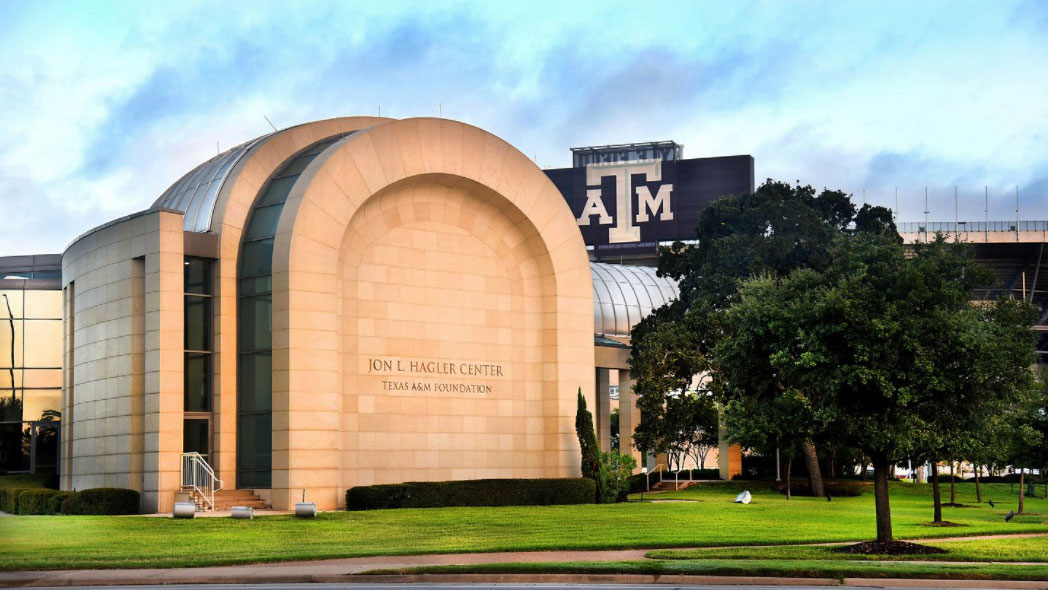
Two faculty in the Department of Chemistry are among the leaders of six additional teams selected campus-wide by Advancing Discovery to Market (ADM) to receive $1.29 million in innovation grants in the program's second phase.
Grants from ADM support faculty-led efforts to transform recent discoveries or innovations into new products for the commercial marketplace. Launched in 2023 through the Division of Research and funded by the Texas A&M Office of the President and the Texas A&M University System Office of the Chancellor, the program has awarded almost $5 million in innovation grants to a total of 22 campus teams in its initial year.
Texas A&M chemists Dr. James D. Batteas and Dr. Wenshe Ray Liu each serve as lead investigators for awards received in the program's respective Type One and Type Two categories, which are differentiated on the basis of a discovery’s maturity. Type One awards present $99,000 or less to research projects that have found an innovation but have yet to identify a specific application. Type Two awards of $100,000 to $500,000 provide funding for refining an innovation and advancing it for commercial use.
ADM is open to researchers, faculty, staff and students of Texas A&M as well as three state agencies: Texas A&M AgriLife Research, Texas A&M Engineering Experiment Station and Texas A&M Transportation Institute. For this second phase, ADM invited 12 research teams to present their discoveries and innovations to an external committee of investors, entrepreneurs and business leaders for evaluation.
“Our ADM program helps our researchers overcome the many obstacles they encounter between the workbench and the marketplace,” said Dr. Jack G. Baldauf, vice president for research and a professor in the Department of Oceanography. “These six teams have demonstrated their discoveries and innovations are ready to advance toward commercialization. We will watch their progress with great interest.”
Batteas' project, “Advanced haptics using photofriction,” in collaboration with co-principal investigator Dr. Cynthia Hipwell from the College of Engineering, received $98,929 to explore the bridge between chemistry and mechanics at the interface of surface chemistry and tribology — the study of friction and wear — in their further investigation of haptics, the field that deals with the technology that stimulates the sense of touch and motion. Their ultimate goal is to better understand the complex nanoscale phenomena impacting the interfaces necessary to model and design touch-screen devices with improved performance and higher reliability with application across a variety of sectors and disciplines.
Liu's project, “Outshining Paxlovid: SR-B-103 and YR-C-136 as next-generation, standalone COVID-19 medications for treatment and prevention,” in collaboration with co-principal investigator and fellow chemist Dr. Shiqing Xu, received the program's maximum award of $500,000 to advance two COVID-19 therapeutic candidates, SR-B-103 and YR-C-136, to the clinical testing stage. With the ADM support, Liu says his team can focus on studying toxicology and drug formation for two candidates in order to alleviate any clinical investigation-related concerns.
"We are very excited about this project being funded by the university," Liu added. "SR-B-103 and YR-C-136 were specifically developed to address the shortcomings of Paxlovid, which include low metabolic stability, significant side effects, inconstant tissue efficacy, a high dosage requirement and a lack of use as a prophylaxis for COVID-19. Both SR-B-103 and YR-C-136 outperform Paxlovid in overcoming these challenges, making them superior alternatives for COVID-19 treatment and prevention."
Dr. Henry Fadamiro, associate vice president for research & strategic initiatives, served as ADM lead and administrator. In addition to Baldauf, the program’s management team includes Greg Hartman, former chief operating officer and senior vice president, Office of the President; Dr. Joe Elabd, vice chancellor for research, The Texas A&M University System; Pete O’Neil, chief innovation officer, Texas A&M Innovation; and Blake Petty, executive director, McFerrin Center for Entrepreneurship, Mays Business School.
Learn more about Advancing Discovery to Market and related application guidelines.
This story is adapted from the original published by Texas A&M Today.

